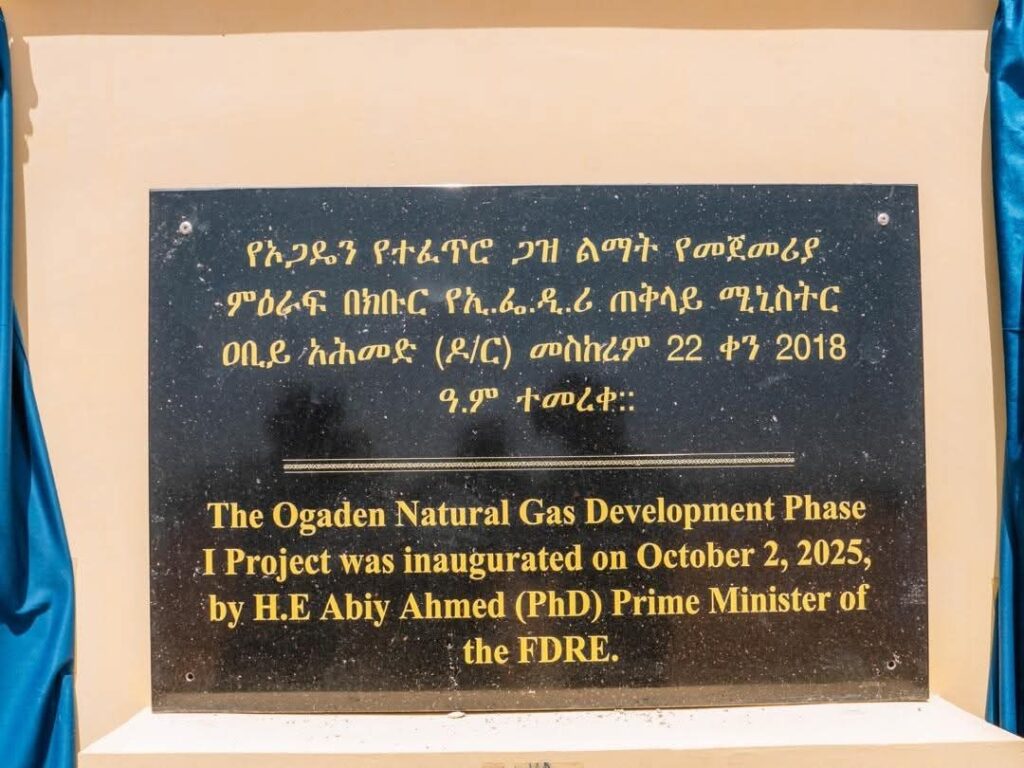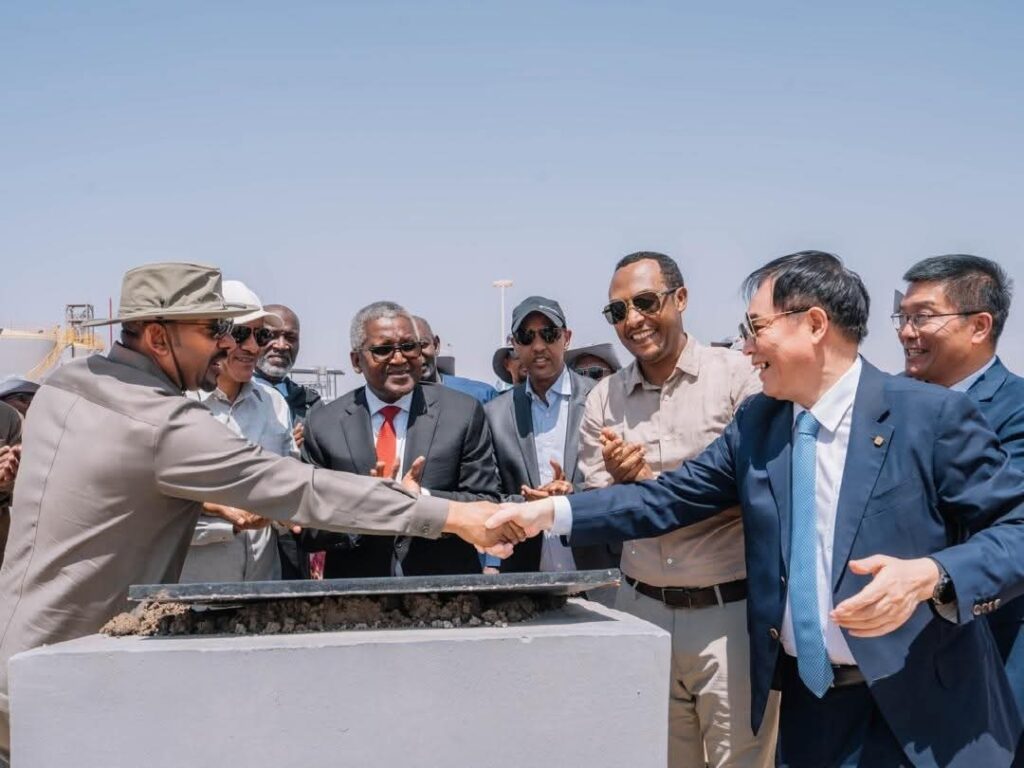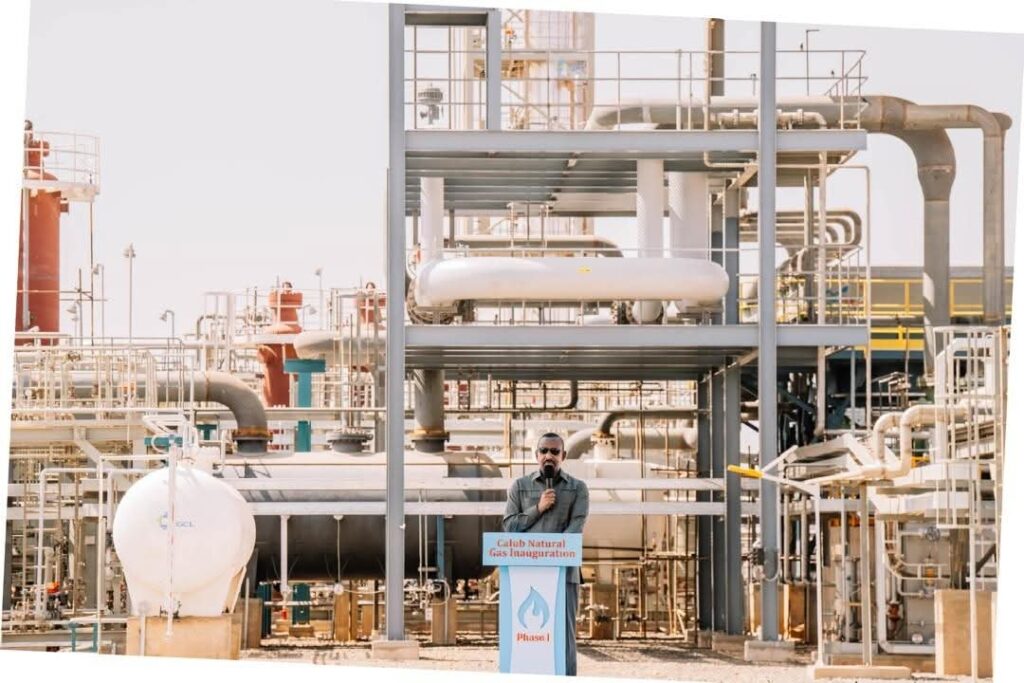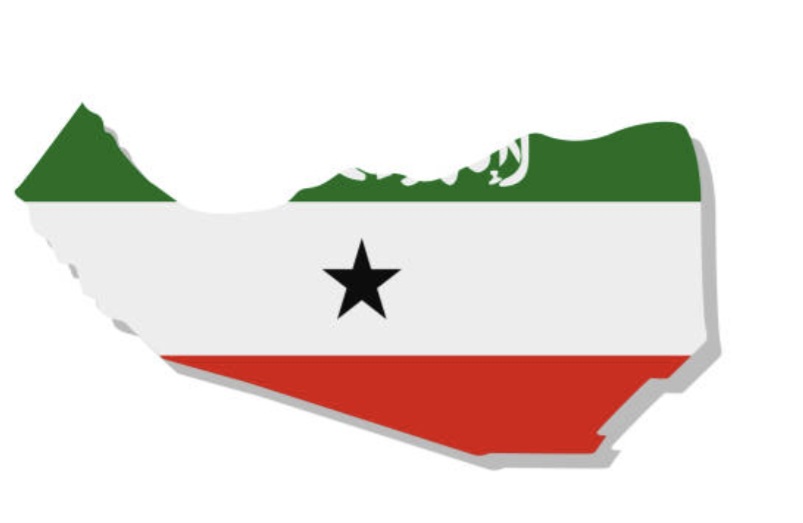Mekelle/Tel Aviv/Nairobi/Pretoria/London
Ethiopia inaugurates vast LNG project in Somali region amid push for energy independence
By Gebre Tatios
Ethiopia has inaugurated the first phase of a multibillion-dollar liquefied natural gas (LNG) project in the Somali region, hailing it as a milestone in its quest for energy self-sufficiency and industrial transformation.
The facility, located in Calub, was opened on Thursday by prime minister Abiy Ahmed and will initially produce 111 million litres of LNG annually. At the same ceremony, the government launched the second phase, which is projected to add an annual capacity of 1.33 billion litres once complete.

Officials describe the plant as more than a gas-processing site, casting it instead as a linchpin of Ethiopia’s wider economic strategy. Alongside LNG production, the project is expected to generate 1,000 megawatts of electricity, provide feedstock for fertiliser manufacturing and supply resources for energy-intensive industries such as cryptocurrency mining.
The government said the LNG scheme, together with associated infrastructure also unveiled in the Somali region, represents an investment of about $10bn. “This project is more than a gas facility,” Abiy said at the inauguration. “It is part of our food sovereignty efforts and our industrial modernisation agenda. As we have always persevered in finishing what we start, these projects too will be completed and delivered for service.”

A longstanding ambition
Efforts to tap Ethiopia’s natural gas reserves in the Ogaden basin date back decades but have repeatedly been hindered by conflict, lack of infrastructure and investor caution. The Calub development marks the most ambitious attempt yet to commercialise the region’s resources.
For years under the Tigray People’s Liberation Front (TPLF)-led government, critics say Ethiopia’s gas potential was left underdeveloped. At the time, officials claimed that extracting natural gas could trigger geopolitical backlash, arguing that Middle Eastern producers would see Ethiopia as a competitor. Some analysts have since dismissed that view as unfounded, pointing out that Ethiopia’s reserves are modest compared with Gulf oil and gas output, and would not pose a serious threat to global energy markets.
The Somali region itself, one of Ethiopia’s most marginalised and historically restive areas, has long been viewed as both a potential source of hydrocarbons and a flashpoint for insurgency. The Ethiopian state fought a low-level conflict with the Ogaden National Liberation Front for years before a peace deal was reached in 2018. The government is presenting the new LNG investment as a symbol of stability and a dividend of peace.
Geopolitical stakes
The project also has regional implications. As a landlocked country, Ethiopia depends on neighbouring states for access to global markets, with Djibouti serving as the main trade outlet. Analysts say the viability of large-scale LNG exports will hinge on transport infrastructure and political arrangements with Djibouti or other coastal neighbours such as Somaliland.

Ethiopia’s push into hydrocarbons comes as several Horn of Africa states, including Somalia and Mozambique further south, seek to leverage their energy reserves to attract investment and strengthen geopolitical standing. Competition for export routes and foreign partnerships could sharpen as countries in the region race to position themselves as suppliers in a shifting global energy market.
Challenges ahead
Despite the fanfare, analysts warn that Ethiopia’s plans face steep challenges. Financing remains tight amid foreign currency shortages, and political instability including tensions in Oromia and the aftermath of the Tigray conflict continues to weigh on investor confidence. Security risks in the Somali region also persist, particularly around major infrastructure projects.
Still, for Abiy, the inauguration of the Calub LNG scheme provides an opportunity to showcase progress on megaprojects that his administration argues are vital to Ethiopia’s long-term resilience. The prime minister has repeatedly framed such initiatives from hydropower dams to industrial parks as symbols of Ethiopia’s determination to elevate its global standing.
“The Somali region has historically been seen as marginal,” said one Addis Ababa-based analyst. “Turning it into a hub of energy and industry would not only change Ethiopia’s economic map but could also reshape dynamics across the Horn of Africa.”





